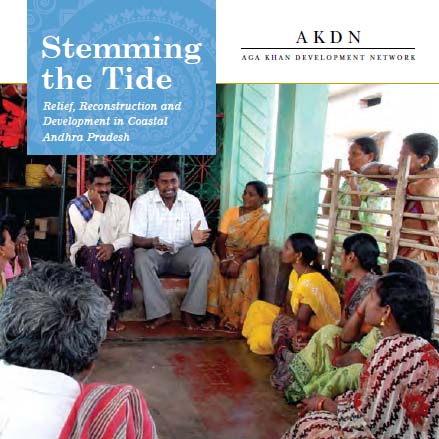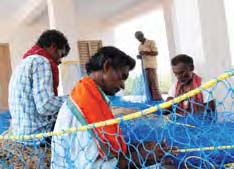 Its aim aim was to improve the capacity of target communities to better manage in times of disaster. To set in motion a process that would sustain a short-term project, the Aga Khan Development Network drew on guiding principles developed from its experiences of projects in disaster reconstruction and more comprehensive development programs: high-quality community-based interventions, working on multiple fronts, and fostering linkages with strong institutional partners.
Its aim aim was to improve the capacity of target communities to better manage in times of disaster. To set in motion a process that would sustain a short-term project, the Aga Khan Development Network drew on guiding principles developed from its experiences of projects in disaster reconstruction and more comprehensive development programs: high-quality community-based interventions, working on multiple fronts, and fostering linkages with strong institutional partners.
At the core of the project’s disaster management and mitigation strategy was the creation of empowered and highly motivated community-based organizations; their participation was critical in shaping and implementing initiatives that would best serve the needs of the vulnerable, particularly women and children.
The Aga Khan Development Network proposed a multi-faceted strategy to improve the disaster resilience of 15 target communities – about 15,000 people. Before work could begin, the input of the communities was vital in helping to implement the project and ensuring that it would be relevant and sustainable.
target communities – about 15,000 people. Before work could begin, the input of the communities was vital in helping to implement the project and ensuring that it would be relevant and sustainable.
Underlying the Andhra Pradesh Relief to Development project was the principle that short-term relief efforts, while necessary in the immediate aftermath of a disaster, are incomplete unless steps are taken to help communities reduce their vulnerability.
Some key lessons include the following –
- Re-orienting communities from being recipients of goods and services toward being actively involved and becoming leaders is important to move from relief to development. A multi-input approach, with initiatives across sectors, such as health, education and disaster preparedness helps harness community support and commitment, motivate individuals, and build trust.
- Building human capacity and systems contributes to the sustainability of disaster mitigation interventions and establishes a foundation for future community-led development initiatives.
- Quality must be the touchstone in implementing every initiative. The project was strengthened by the contributions of multiple Aga Khan Development Network agencies with interconnected mandates and expertise in construction, health, education, community mobilization, and disaster preparedness.
- Working closely with partners ensures that new resources will be readily employed and disseminated, promoting the transfer of knowledge beyond the target communities.
- Being proactive by integrating community-based disaster preparedness with improvements in the built environment in such areas as housing and public buildings will help minimize the impact of disasters on human lives and property.
- While it is still early to assess the full impact of the project on the 15 target communities, clearly communities that were once extremely vulnerable in times of disaster and dependent on a tenuous connection to government agencies for help now have the institutions, skills and confidence to strengthen their collective safety and well-being and to be advocates for change that will improve their long-term health and safety.
Download the report here -
/articles/stemming-tide-relief-reconstruction-and-development-coastal-andhra-pradesh-report-aga-khan